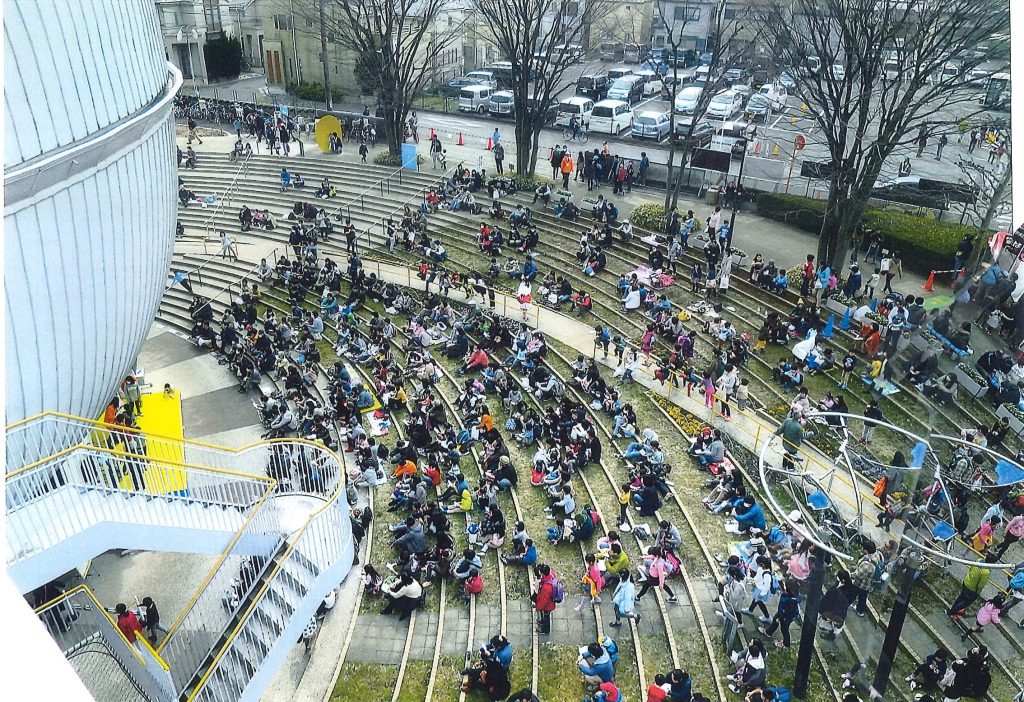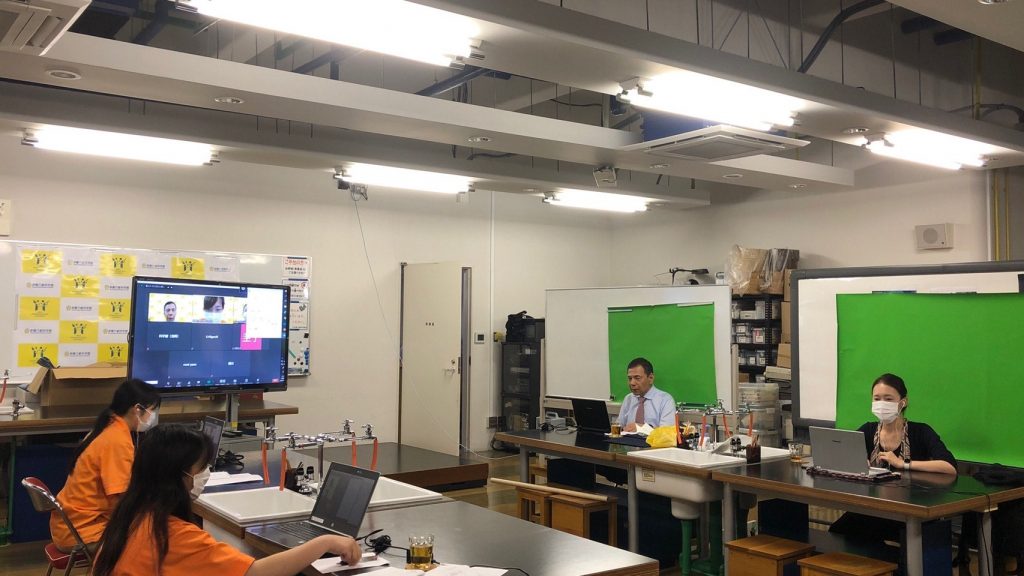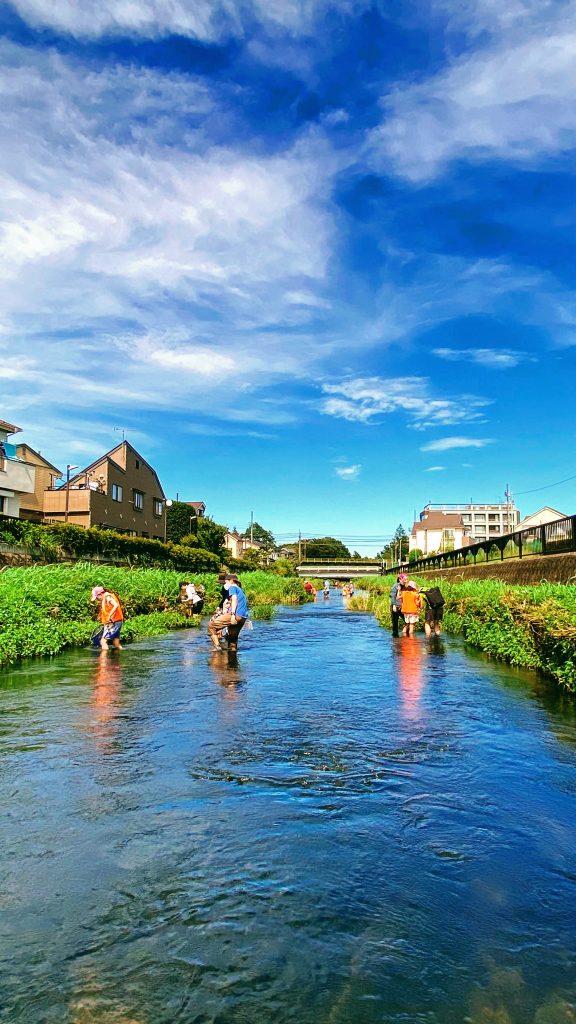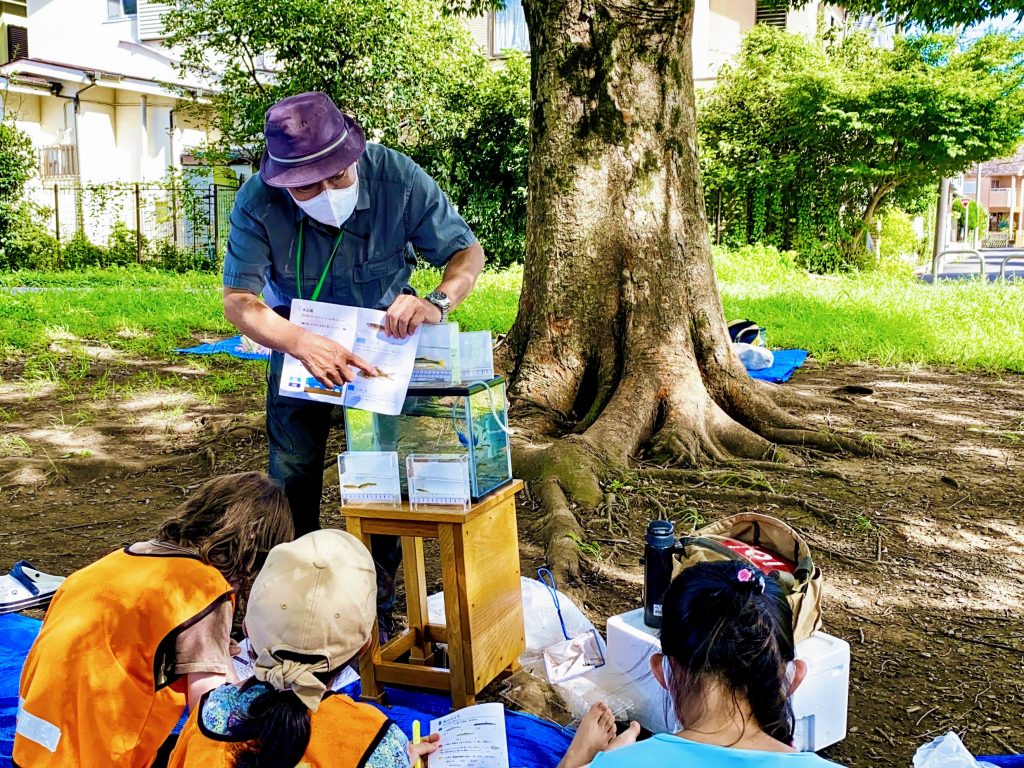
October 1, 2021
The Networks that Support Museum Activities During the Coronavirus Pandemic
[2021.10.1]
Hiromi TAKAO
Tamarokuto Science Center,
Research and Education Group Leader
The coronavirus started impacting museums in Japan in February 2020, almost a year and a half ago. In Tokyo, where the Tamarokuto Science Center (hereafter referred to as “the Center”) is located, a state of emergency has been declared five times, of which the Center has experienced two temporary closures. Here, I will reflect on the “networks” that have continuously supported museum activities from the tumultuous onset to the present, from three perspectives: organizational, regional, and individual.
Introduction – the Science Center Before the Coronavirus Pandemic
The Center was jointly established by six municipalities in Tokyo’s North Tama area1 and opened as a science museum for the local community in 1994. The Center’s mission is “to create a diverse learning environment where everyone can enjoy science and learn more about the world that they live in” and “to contribute to community development.” In consonance with science museums around the world, our permanent exhibition rooms are lined with biology, fossils, and mineral specimens as well as several interactive displays. The Center also houses the accredited and most advanced planetarium projector in the world which projects over 140 million stars. The built-in laboratories at the Center and the programs held every weekend allow visitors to enjoy and learn about science through communication with the volunteers and staff – which is considered the main attraction of our establishment. On weekends and extended holidays, the Center was seen brimming with visitors.
However, we have had to reevaluate the way the Center is administered after the coronavirus outbreak, for we could no longer depend on increasing the number of visitors or continue the communication-oriented management style between the volunteers, staff, and visitors. This turn of events allowed us to reestablish our presence as a public facility and develop programs that benefit both the community and our visitors, as well as to reevaluate our management style as a designated administrator.

1. The Networks Involving and Surrounding the Association
a) Establisher
The Center was established by the Tamarokuto Science Center Association (hereinafter referred to as “the Association,”) a specialized local public entity, which is a rare form of museum management in Japan. Since 2012, NOMURA Co., Ltd. has been in charge of operations for the second term as the designated manager. The Association, who is the establisher, has been able to communicate with the designated manager about specific issues and solutions daily due to the office being stationed inside the Center. This approach remained the same throughout the pandemic, and the decisions on various measures related to coronavirus, such as temporary closures, have been made through mutual agreement between the parties while referring to announcements from government and administrative agencies.
In addition, the Association submitted a proposal to Congress for compensational support to navigate the impact of the coronavirus pandemic, especially due to the Center’s revenue decline from the lack of visitors2. The basic notion of this proposal was to secure the employment of the museum staff and to be able to continue operations to the fullest extent while prioritizing the safety of visitors. This proposal was subsequently approved (October 2020.) The amount of compensation was decided upon to be 50 million yen3 on the premise that efforts will be made by the management, such as cost reductions. The on-site staff can rest assured to try new methods and overcome hardships in a secure working environment. This was all made possible by the mutual trust and endeavors of the establisher.
b) Volunteers
The Center established a volunteer association in 2000, with 105 Senior Volunteers and 28 Junior Volunteers (5th grade to high school students) (as of September 2021). The Senior Volunteers branch out into teams according to different days of the week and fields such as visitor support services, program implementation, and outreach. However, since February 2020, their activities have been suspended.
Since fall 2020, the Junior Volunteers have been assigned to create the “Junior Volunteer Bulletin” as an activity that won’t require direct contact with visitors. However, it was only during periods when the state of emergency was lifted, with limitations on the number of participants and restricted schedule. As for the Senior Volunteers, their activities have not yet resumed. To keep in touch with the volunteers, the supervising museum staff created and sent out a bimonthly information packet including a newsletter published by the Center, and a compilation of correspondence from each volunteer. Now that the vaccinations are making headway, we are hearing about other museums recommencing their activities. However, we think it is necessary to discuss with the volunteer association and tread carefully about when to resume activities.
c) Science Museum Organizations
There are organizations in Japan specifically for science museums such as the Japanese Council of Science Museums (JCSM) and the Japan Science Museum Association. The Center is a member of both. Until now, the information provided on the mailing list from both organizations was mostly on the topic of traveling exhibitions and staff recruitments. But recently, especially from JCSM, there is useful administrative information concerning the pandemic that is relayed from the Agency for Cultural Affairs, Government of Japan, and the Japanese Association of Museums that we find helpful in operating our Center. Training programs, research presentations, and quarterly magazines are all informal but effective networks to learn about the specific efforts of each museum and obtain hints for the operation of our own.
2. Programs Fostered by Community Networks
Generally, the programs will proceed if the Center is open, except for a cancellation request by the instructor. This is due to the measures we have taken to prevent the spread of the coronavirus by the guidelines since reopening our doors in June 2020. This section will cover two topics related to the community collaboration programs during the pandemic.
a) Online Program
Since experiencing the temporary closures, the Center has prepared equipment that can be used to develop online programs and has accumulated experience in developing and operating programs specifically for online use. On June 20, 2020, we held a coronavirus-related lecture, “What is the ‘coronavirus?’ Let’s keep our body healthy to fight against COVID-19! (Lecture via Zoom)” which became the first step in that direction4. This lecture was realized with the cooperation of Professor Fumiyoshi Ishii and others at the Self-Medication Laboratory of Meiji Pharmaceutical University, located in Kiyose city. The laboratory has been conducting research activities in collaboration with the Center for several years to promote the health of citizens in the northern Tama area. Although this project was the first attempt, the interactive online program has continued since then and has broadened the scope of both parties’ activities.

b) Outdoor Observation Event
At the Center, we hold various outdoor observation events with the cooperation of local citizen activists. My team members and I came up with a program targeting parents and their children who are not originally from Japan to conduct a river wildlife observation event under a state of emergency in August 2021. Under the bright blue summer sky, the participants were able to use a landing net for the first time and eagerly observe the various wildlife that they caught.
One of the citizen activists who worked with us to organize the program commented that it had been a long time since they had been able to participate in any activities or other field observations since the pandemic. From the parents of the participants, we received positive feedback that this was the one event that they had looked forward to attending, due to the restrictions of going out in public; and this event was the single positive memory of this summer. It goes without saying that we were required to take sufficient measures to prevent the spread of the virus. But offering an opportunity for participants to catch and observe wildlife in their local river during the summer under coronavirus restrictions and providing a place for citizen activists to shine; this event was a testament to establish our role as a museum that contributes to the community.


3. As a Member of the Museum Community
I belong to several museum-related academic associations, including ICOM. Additionally, several museum staff and I have been managing a Facebook Group, “Information for Museums in dealing with COVID-19” since February 24, 2020. The purpose of this group is to exchange information regarding the coronavirus that other facilities have announced via the web and SNS. As of September 2021, there are 877 members. Every museum was struggling to navigate through the temporary closure brought on by the simultaneous school closures, and this Facebook group was created with the hope of being able to share official information without violating information control. Though as not as much as the beginning, the group receives information from various locations in waves as the coronavirus infection numbers rise and fall.
As a solution to the Facebook group’s need for direct communication, the volunteers and I started an online event in May 2020 called, “COVID-19* Museums Online café.” The event is held approximately once a month, and as of July 2021 has been held 15 times. Anyone interested in this event can participate, but limited to about 20 people per session, to provide an opportunity for each person to speak and share ideas. The topics we have covered so far include sharing the current status of each museum, reviewing guidelines, overseas museums’ countermeasures against coronavirus, online programs, reexamining the relationship with our visitors, discussing case studies of educational programs, and sharing our perpetual struggles related to the pandemic. In reviewing the guidelines, the voluntary participants finalized a draft and submitted it to “Museum Studies.”5 It is not often that I get a chance to engage in casual conversations with people regardless of their background, region, museum categorization, faculty size, management style, and job title. Through every session, the presenters and participants offer various suggestions, but also give me the courage and energy to review the efforts of my organization to keep trying. When I hear similar comments from the other participants, we emphasize with each other, and I feel a bond forming. These activities will continue until the pandemic settles, but in the future, we may repurpose this platform and shift our dialogue from the coronavirus to the fundamental issues facing the museum community.
In Conclusion
This article is a personal reflection on the networks that support the Center’s activities amid the pandemic. In Japan, our freedom to travel and opportunities for face-to-face communication is expected to be restricted for a prolonged period. However, we are feeling the strain of continuing constructive activities while bound to the same daily routine within our staff. Whether online or onsite, when it comes to supporting the activities in each institution, “networks” among diverse people and organizations will be more essential than ever. To keep building a vast “network” of connections, we need to continue evolving and transcend the existing forms of networking.

(Hiromi TAKAO)
- Tanashi, Hoya (currently called Nishitokyo after merging the two cities,) Kodaira, Higashimurayama, Kiyose, Higashikurume
- As a result of the temporary closure and visitor restrictions, the number of visitors decreased from 244,000 (FY 2019, with a temporary closure from February 27 to March 31) to 80,000 (FY 2020), approximately one-third compared to before the pandemic.
- The amount of compensation is based on the comparison between the average of three years before the pandemic (FY 2017 – FY 2019) with the actual records from March to June 2020 and the expected amount from July 2020 to March 2021, with an expected decrease of approximately 64%.
- Takao (2020) “Activity of a science museum in the COVID-19 pandemic situation and ways of conveying information on infectious diseases: focusing on a case of Tamarokuto Science Center” Japanese Associations of Museums, Museum Studies vol. 55 No.11 (No.630) pp.2-3.
- Hashimoto, Onimoto, Maruyama, Takao, Chiu (2020) “Proposal for the development of comprehensive guidelines for the prevention of the coronavirus infections in museums” Japanese Association of Museums, Museum Studies vol.56 No.2 (No.622) pp.26-28.